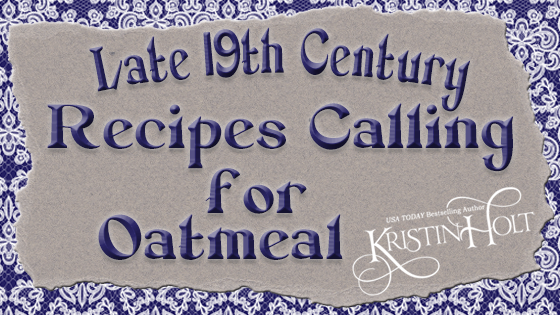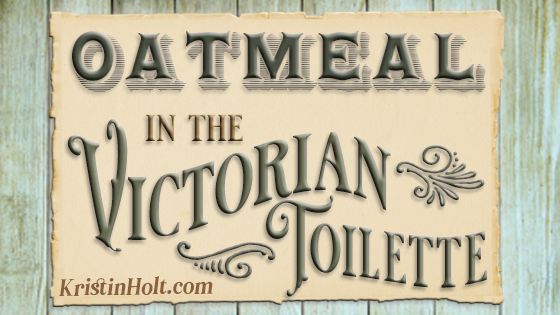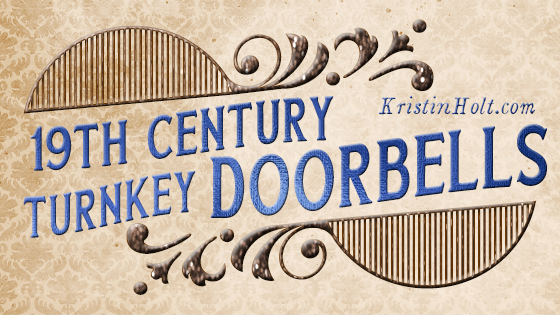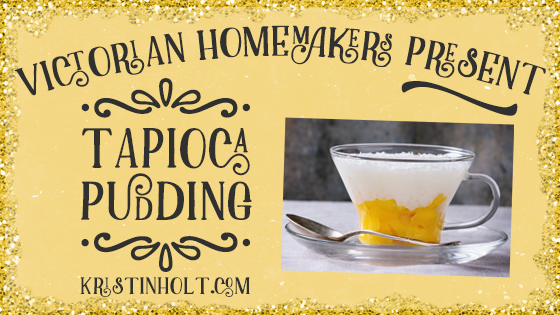
by Kristin Holt | May 27, 2019 | Articles
Oatmeal took its place in the Victorian-American kitchen in the late 19th century. We’ve discovered oatmeal cookies (with and without raisins), oatmeal porridge, oatmeal in toiletries; now more late 19th-century recipes that call for oats. Delicious dishes like oatmeal puddings, oatmeal custards, oatmeal cream pie, oatmeal muffins, oatmeal biscuits (sweet), “parkin”… and a rather scary option– Oatmeal Soup.

by Kristin Holt | May 21, 2019 | Articles
In this Blog Article Series about Victorians and Oatmeal, we’ve seen cookies (both with and without raisins), Victorian attitudes about oats for food (rather than fodder), and vintage newspaper clippings highlighting the attitudes of some American Victorians. This article is still about oatmeal–and Victorian woman using those rolled oats in bath sachets to soften the skin. See the Victorian-American bath sachet recipe(s).

by Kristin Holt | Mar 22, 2019 | Articles
I’ve read fiction set in the nineteenth century that references doorbells– and gets it right! (I can’t properly convey how giddy this makes me!) Picture that turnkey doorbell that makes a mechanical clattering sound inside the house.

by Kristin Holt | Feb 11, 2019 | Articles
Etiquette and all that is deemed “good manners” morphs over time. Behavior that our nineteenth-century ancestors would find appropriate has largely disappeared, and today’s idea of a man’s best actions with his hat would appall our great-granddaddies. Specifically speaking, “Common Details of Western Historical Romance that are Historically Incorrect, Part 2” entails nineteenth century hat etiquette–specifically men in the company of women–and contains more vintage citations than my earlier post titled Hat Etiquette of the Victorian Era.

by Kristin Holt | Jan 23, 2019 | Articles
Victorian Americans favored many different kinds of puddings for desserts, during all seasons of the year. One type was tapioca–which hasn’t changed much in the intervening hundred-plus years. See many similar recipes in vintage era cook books and newspapers; plain, apple, peach, (and early in the 20th century, caramel).













